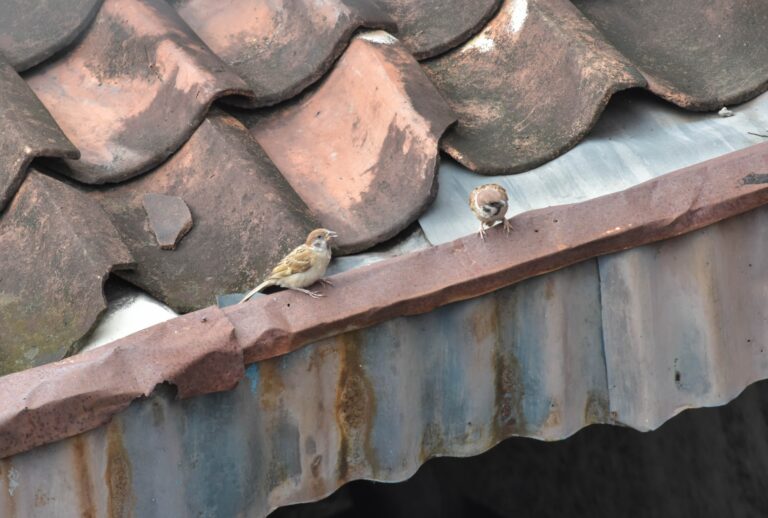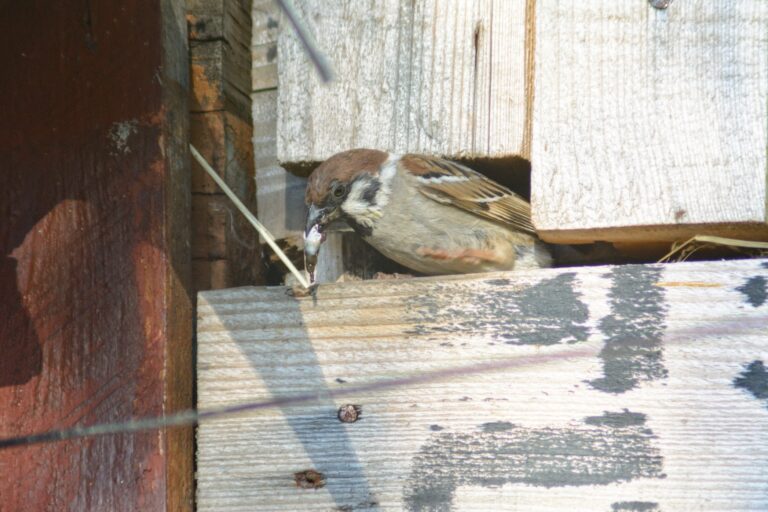May 27, 2021
Where Do Sparrows Nest In Homes?
House sparrows have long been associated with people. These pest birds have chosen to live near human dwellings and take advantage of this close association. As a result, they can wreak havoc on your property, and your sanity!
Sparrows prefer to nest in covered spaces, mostly in residential buildings, although they frequent barns and outhouses as well.
They build their nests using a variety of materials such as wool, hair, or man-made products, but grass or straw is always their favorite. Occasionally, they utilize nests abandoned by other birds.
In this article, we will discuss all the places that sparrows like to nest in your home. So keep reading to learn more!
Common Places Where House Sparrows Can Be Nesting
IN ROOF SPACES
They have a bad reputation for nesting in roof spaces where they gain access through cavities under the eaves. The gaps allow the sparrows to be able to get in and out as they please.
If the roof on your house has clay or concrete tiles, sparrows usually build their nests under the tiles, at the edges of the roof, and above the fascia boards.
When the birds push their nest materials under the overhanging barrel-shaped tiles, they will dislodge these tiles and cause them to fall crashing down.
In addition, loose, missing, or cracked tiles can soon become potential sites for sparrow nests, and harmless looking debris or dirt will only help fuel the problem.
Besides nesting in the eaves, in rafters, and underneath the roof shingles, house sparrows tend to make their nests in soffits. These spots are perfect for roosting as they provide cover to stay away from predators and good shelter from the elements.

UNDER AWNINGS
Sparrows can build nests on or under your patio awnings as they are easy to rest on.
There are many methods you can use to stop these birds from nesting under your awning. Using bird netting is excellent for keeping sparrows away and prevent them from making a nest in the awnings. And even if they come too close to the net, they will not become trapped in it.
IN CHIMNEY
Just like the roof and awnings, a chimney is ideal to set up a home due to the great deal of protection and warmth that it provides.
There is only one way that birds get into the chimney, namely through the upper portion of the chimney.
However, it often happens that the birds nesting on top of the chimney wander inside or slip off the edge. And that leaves them unable to fly up again to escape. There is not enough space to spread wings, nor can they fly vertically.
Sadly, birds can be difficult to get out of the chimney.
IN ATTIC
House sparrows in the attic are a common problem as they will build nests and lay eggs happily in such a warm, secluded place.
A high place like the attic is easy to take flight and stay close to food sources. Nests in attics are usually located 8 to 30 feet off the ground, which allows sparrows to hide from predators.
Damaged roofs and small openings near the top of a house such as attic vents, could allow birds into your home. Since sparrows are little creatures, they can fit easily through crevices in the roof, walls, and windows as tiny as 3/4 of an inch.
INSIDE WALL CREVICES
Sparrows are also notorious for sneaking into various openings in structures and making their nests in the crevices of walls. Once some of them have found a site they enjoy, sparrows will then begin to swarm the place in large numbers.
Thus, it’s important to inspect your walls for cracks, holes, and crevices that may serve as entrance points for these birds.
And if you notice that the exterior walls are stained with bird droppings, that’s a clear sign that sparrows are making themselves at home, in your home!

IN VENTS
Dryer vents, attic vents, as well as openings found on the home’s exterior walls from bathroom and kitchen exhaust fans, provide excellent nesting locations. Since the vents are quite small (typically 3 or 4 inches in diameter), sparrows find them ideal to stuff their nesting materials into them.
Vent openings usually have plastic or aluminum covers that stop drafts from getting in. But these covers are nothing but just flaps or louvers that open easily to allow air to escape. The sparrows have learned to manipulate them effortlessly.
Feces and urine inside the vents can create a strong odor throughout your home.
IN GUTTERS
House sparrows might also decide to nest in your gutters. When a bird builds its nest in the rain gutter, it becomes a mess as there is a lot of debris and droppings left around.
This will eventually block the flow of water, which may present a fire hazard at some point. So this is why it’s very important to stop sparrows from nesting in the gutter.
IN TREES
Open tree branches or enclosed cavities in a tree are ideal places for the birds to nest in. And sparrows will indeed choose them when other sites such as holes in building walls, vents, birdhouses, and more, are scarce.
On a Final Note,
Your house structure can provide sparrows with a great substitute for a tree hollow. Thus, you need to act as soon as you see a telltale sign of them settling in so that you don’t let these little cute birds become a big pest problem in the future.
Here at Westchester Wildlife, our specialists have all the tools and knowledge to discourage sparrows from choosing your home to nest in. So contact us today and have our trained technicians deal with your pest bird problem safely and humanely.
